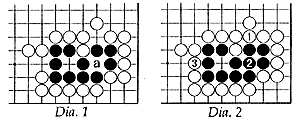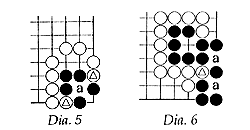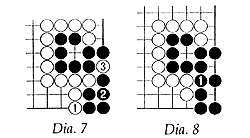Lee Chang Ho, Cho Chikun -- the superstars of go
With the emergence of a number of go prodigies in South Korea and China in the past 10 years, it has become hard to say with certainty who is the world's strongest player. Most people would probably assign that accolade to Lee Chang Ho of South Korea. Not only does he dominate all the titles and tournaments in his native land, he also holds three out of the five top international titles: the Samsung Cup the Fujitsu Cup and the Tong Yang Securities Cup.Lee, who is only 23, became a professional at the age of 11. He won his first international title when he was 16, and, by the time he was 17, he held a majority of the South Korean titles.
In Japan, the number one player is Cho Chikun. Cho is also a South Korean, but he chose to make his go career in Japan. He was born in 1956 and came to Japan when he was 6 years old. He became the youngest-ever professional go player at 11, and he is considered to be one of the great prodigies in the history of go. He won his first title at the age of 18 and, by the time he was 27, he held the top four Japanese titles simultaneously, a feat no other player has accomplished. At one time or another, he has held every one of the seven major titles, the "grand slam" of Japanese professional go. Currently, he is the undisputed king of the Japanese go world, holding the top three titles: Kisei, Meijin and Honinbo.
It is natural to compare Lee and Cho. Both are South Korean prodigies and both turned professional at the same age. Lee dominates the South Korean tournament go scene and Cho the Japanese. However, in all of their encounters, Cho has fared badly. In 1993, they both ended up in the best-of-five final of the 4th Tong Yang Securities Cup, and Lee won the match 3-0.
Cho is at his best when he has plenty of time to think. In international tournaments, players must make their moves within a three-hour time limit, and this restriction affects Cho's play. In games for the top three titles Cho now holds, each player has an eight-hour time limit, and those games are held over two days. In addition, these titles are decided by best-of-seven matches as opposed to the best-of-five matches in most international tournaments. To quote one top Japanese professional who has faced Cho a number of times in best-of-seven title matches: "In five-hour games, Cho will sometimes lose carelessly, but not so in eight-hour games." Perhaps the only way we will ever find out which of these two geniuses is the stronger is if some company sponsors a seven-game match between them.
False eyes
 |
At first glance, the black group in Diagram 1 appears to have two eyes, but on closer inspection you can see that the "eye" on the right is not really an eye. White can threaten to capture the three marked stones by playing 1 in Diagram 2. If Black connects with 2 to avoid being captured, he is left with only one eye (two lines to the left of 2). Finally, White can play 3, and the black stones are left with only one liberty (the eye two lines to the right). White can play on this point any time he wants and capture twelve stones. Black has no way to escape.
   |
Diagrams 3 to 6 show some other examples. The points marked "a" are all false eyes. Note that all of the marked white stones are necessary to make the points "a" false eyes. If Black were to occupy one of them, the points "a" would become real eyes and the black stones would live.
The marked stone in Diagram 6 makes the points "a" false eyes. If White threatens to capture the three marked stones with 1 in Diagram 7, it is useless for Black to connect at 2 because he is left with only one liberty (at 3) and White can capture five black stones at that point on the next move. However, if Black were able to play at 1 in Diagram 8, the black stones would be immune from capture because they would have three real eyes
